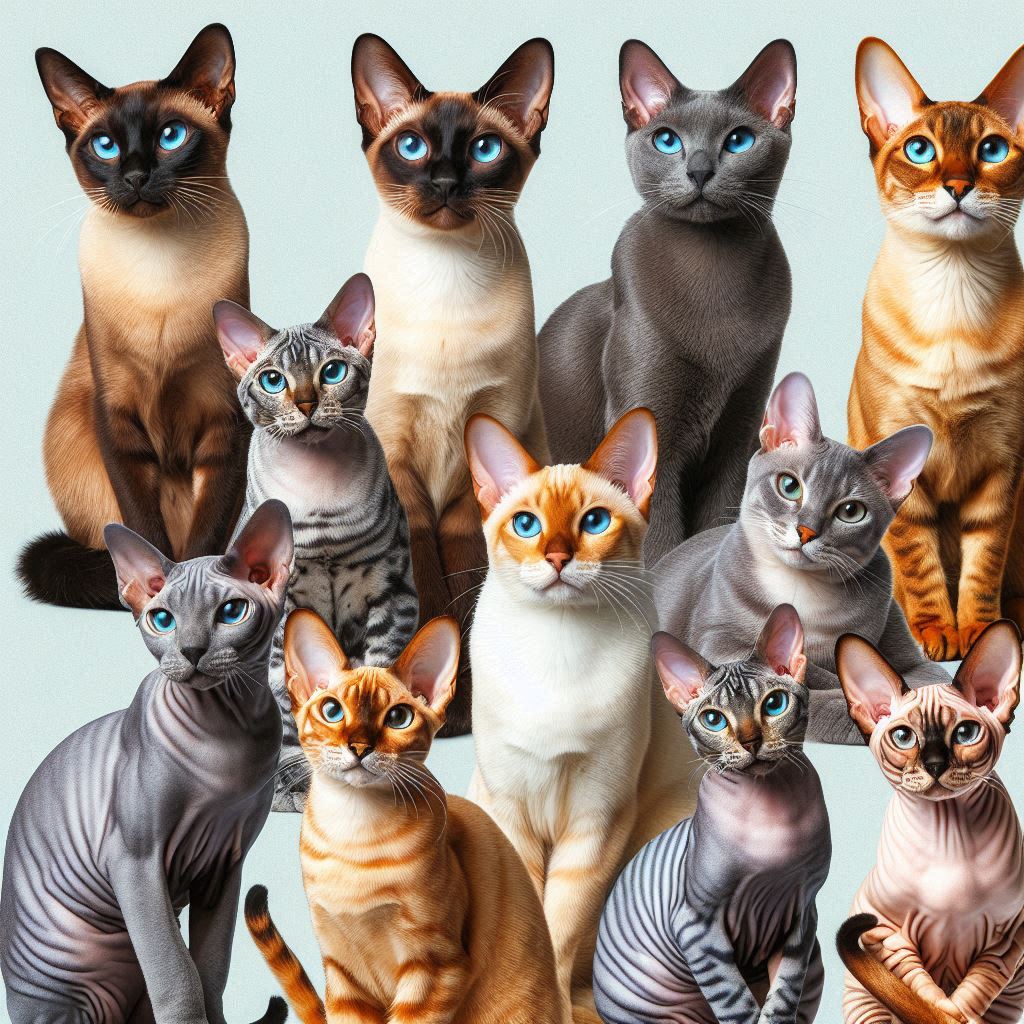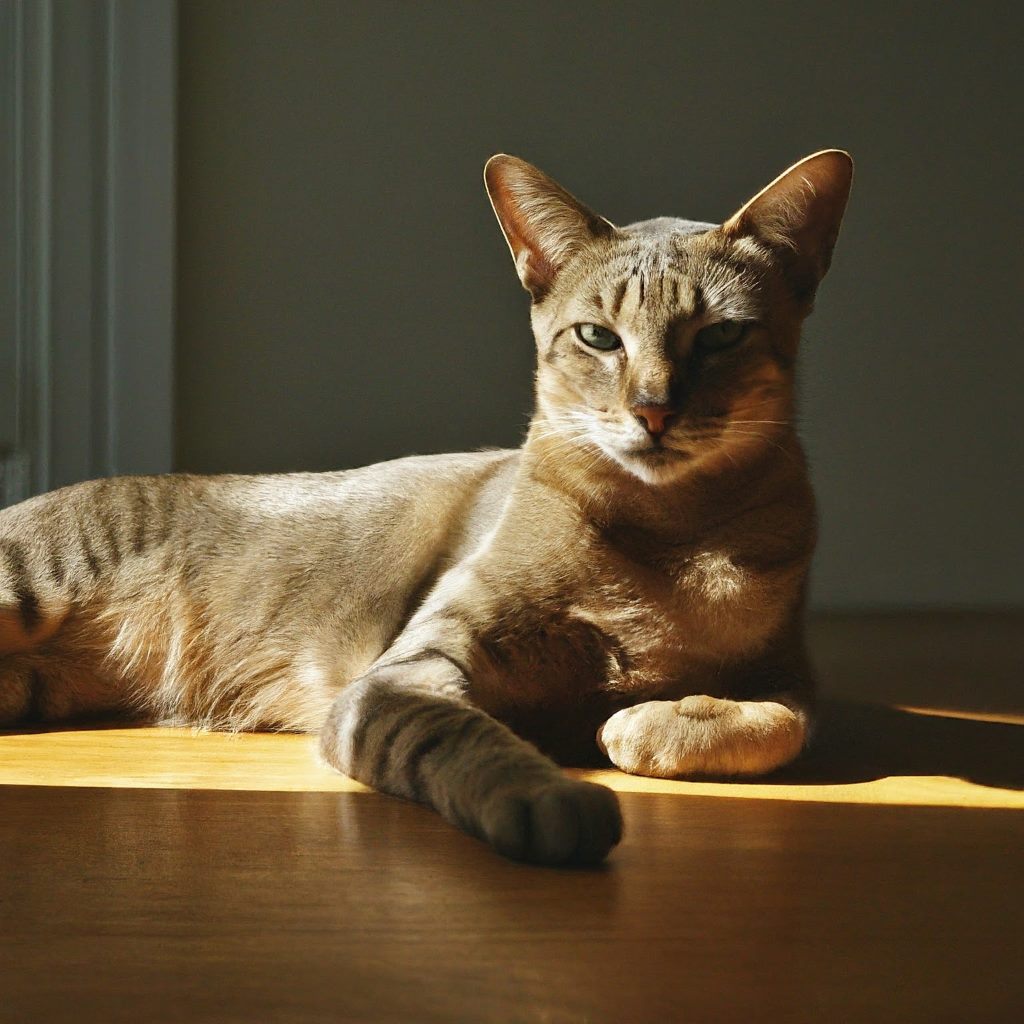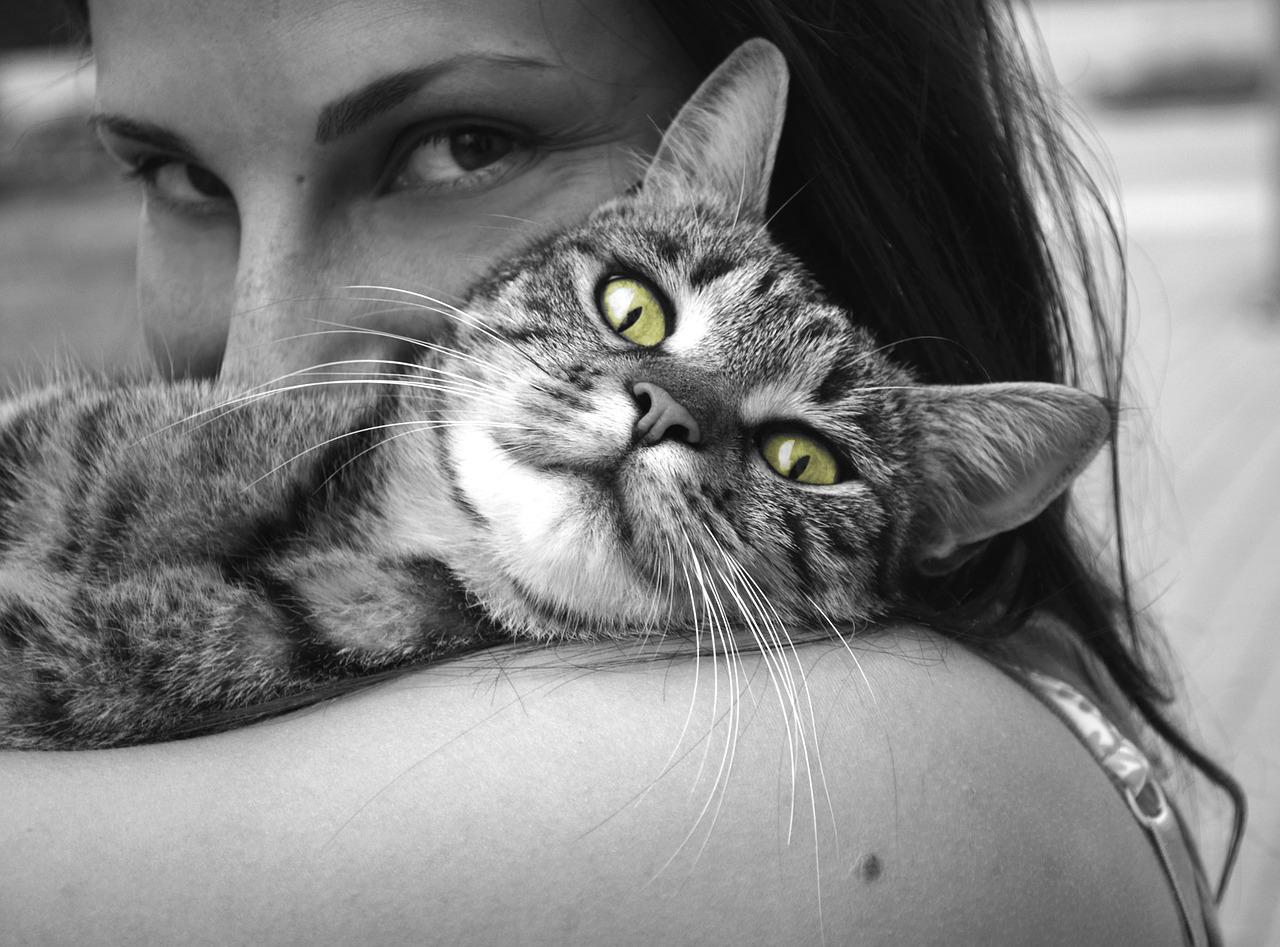
Cats are lovely creatures. They have wonderful personalities, they let you know their likes and dislikes and they provide loving companionship and playful friendship.
However, if you’ve owned a cat in the past or do now, you’ve likely dealt with their one big problem: tons and tons of cat hair, everywhere!
It’s a huge problem, especially if you have bad allergies, but what can be done? Cats don’t like to bathe and generally don’t like to be brushed.
There are hairless breeds of cats available, but if you’re not willing to go to that extreme, thankfully, there are other options.
Below, we’ll go through a number of breeds of cats that don’t shed or shed very little. Please read the information on each breed to help narrow down what cat would fit best in your home.
As always, should you have additional questions about a breed, it is best to reach out to your veterinarian for more expert information.
Know that Less Shedding Does Not Mean Hypoallergenic
While cats that shed less than others are decidedly better for people with allergies, you should know that a low-shedding cat isn’t necessarily a hypoallergenic cat. It is a myth that allergies to cats are caused by their hair. Cat dander actually triggers the allergies.
That being said every cat produces dander, even those that are hairless. Hairless cats and hypoallergenic breeds simply create less dander.
Similarly, cats that don’t shed much also produce less dander and there’s less hair floating around your house, so they will be a better choice for someone who has allergies than a long hair cat.
Below is a list of some of the most popular breeds of cats that are low-shedding or hairless. If one of these cats seems like a good choice for your family, we encourage you to talk to your veterinarian or do more research on the breed before deciding to adopt.
Shedding is only one aspect of cat ownership; it is wise to be fully educated on the cat of your choice before making the serious decision to welcome them into your family.
Choosing a Hairless Cat Means Less Shedding
The following options are hairless cats that all have minimal shedding. While some people may prefer a traditional-looking cat with long hair, hairless cats have minimal dander and almost no shedding.
Contrary to popular belief, they do have a layer of short fuzzy hair and also are typically very friendly and social cats.
1. The Sphynx

The Sphynx has no furry coat, but instead a fuzzy layer of down that is very soft. It feels like velvet! Incredibly cute and extremely affectionate, these cats are perfect for nearly anyone who is interested in getting a cat, especially families with children. Sphynx cats love attention and seek out snuggles from their owners!
Sphynx cats are considered hypoallergenic and due to their lack of coat require very little grooming and do not shed. However, they are very sensitive to cold temperatures.
Like some small dogs, consider having a sweater on hand for your Sphynx to wear in cooler months so they are comfortable.
Sphynx cats come in a large variety of colors and styles. They’re very cute! Sphynx owners should be aware that this breed does have a higher risk of heart problems than other breeds and that they might need more frequent baths than other types of cats because they have less hair to absorb their bodily oils.
2. The Donskoy

The Donskoy cat is another hairless cat that was created in Russia. It is often confused with the Sphynx because it looks very similar. The key difference is that the Donskoy has a more almond-shaped, slanted eye.
However, like the Sphynx, this breed of cat is hairless and has a soft down fuzz that feels like suede. It’s a medium-sized cat with soft but wrinkly skin that is very similar to human skin.
In fact, just like humans, the Donskoy will sweat when it is hot. Unlike the Sphynx cat which has issues staying warm, the Donskoy has a high body temperature that keeps this breed from getting some of the common respiratory diseases that impact Sphynx cats.
These cats are extremely friendly and very sociable. Some varieties of Donskoy will grow a thin coat in winter that sheds when it gets warm outside, however, this “shedding” is far less than what you’d see on a cat with a traditional coat.
There are four main varieties of coats. Rubber bald Donskoy cats are born bald and never grow hair. Brush Donskoy cats have soft and wiry hair. Flocked Donskoy cats have a very thin and soft layer of down.
Velour Donskoy cats are born with a thin coat that eventually disappears from everywhere but the cat’s tail, face, and appendages. Most varietals of the Donskoy are hypoallergenic.
3. The Peterbald

Yet another cat that is often mistaken as a Sphynx, the Peterbald breed is a hairless cat that is a hybrid between the Donskey and Oriental Shorthair breeds.
They are originally from Russia, with their name a nod to the city of St. Petersburg. The Peterbald’s fur can change over time, so a kitten who is born hairless might develop a soft fuzz, for example.
There are five main varietals of Peterbald coats. Bald coated cats have no hairs or even whiskers and can even be a little sticky to the touch! Brush coats consist of extremely small, wiry hairs that feel like a rough velvet.
Frock coats are 90% hairless but very soft, like suede. A straight coat consists of short hair and is a more traditional looking coat. Finally, the velour coat varietal consists of 70% hair coverage with hairs that are no more than 1mm in length.
According to The International Cat Association, Experts say these cats, like Sphynx, don’t control their temperature well and get cold very easily. Keep a coat on hand if you live in colder areas.
Otherwise, be prepared to see your Peterbald snuggling up to everyone in your family, even your other pets, to get some warmth and love!
This is a great cat for anyone, single, or with a large family. The great news is, not only do these cats have minimal shedding, but they are also hypoallergenic!
4. The Devon Rex

While not technically hairless due to its short down coat, the little Devon Rex is a sweet and playful cat that just loves hanging out with its human owner and feline friends.
Devon Rex breeds truly feel like velvet and have a short, curly looking coat. Instead of a multi-layer coat, the Devon Rex only has its own layer of hair, which is very soft. Of course, this curly little coat produces minimal hair, so the Devon Rex breed does not shed much at all.
A constant companion, experts say your Devon Rex wants to spend all of his time with you and will end up petting you if you don’t pet him! He also will likely try to sleep with you for warmth at night.
One thing Devon Rex owners should be aware of: these cats love to eat! Make sure you’re watching their calorie intake, or they can plump up.
These cats have large ears and wide-set eyes, so they have a very particular but very cute look. They’re curious, intelligent, and easily trained. Plus, they get along with all living creatures, so you’ll have a friend for your family for life!
Watch this YouTube Video about Talking Devon Rex
You Can Still Get a Cat with a Traditional Coat That Has Minimal Shedding
While hairless cats are obviously a great option if you’re searching for a cat that doesn’t shed, they are decidedly different looking.
Some people love the look of a wrinkly, wide-eyed hairless cat with its big ears and affectionate personality. However, if your heart is set on a very furry feline friend, we have some great options for you below.
1. The Siamese

Siamese cats are thin, beautiful cats with a knack for conversation! Originally from Thailand, these cats are known for their stunning looks. They have beautiful almond-shaped eyes and gorgeous cream-colored coats.
While many people choose this cat because of its unique look and friendly behavior, a huge benefit to the Siamese cat is its fine, one-layer coat.
Most cats have a dual-layer coat in which one layer is constantly shedding. To ensure that your Siamese cat’s shedding is under control, simply comb your cat with a fine-tooth comb once a week.
Experts say if you regularly comb the Siamese cat’s coat, it will drastically reduce how much it sheds. The Siamese cat is a perfect cat for those looking for a beautiful and friendly cat that does not shed.
2. The LaPerm

The LaPerm breed has a coat, but a very interesting one at that. Its coat is very wavy and long yet doesn’t shed like most long-haired cats. It’s hard to believe when you look at this breed of cat, which somewhat resembles a ball of fur!
This breed’s fur comes in myriad colors and patterns, so there are many options to choose from. Plus, this cat is the perfect option if you want a cat with a big coat but don’t want to deal with serious grooming and upkeep.
According to The Cat Fanciers’ Association, Experts say you see the most variety in the LaPerm breed as kittens.
Some are born without any hair at all or some with curly or even straight hair. Inevitably, this hair will turn into the beautiful long and wavy coat that LaPerm cats are known for.
Besides minimal shedding, experts say that these cats are affectionate and intelligent. They love playing with lasers and some owners say their Laperm knows how to play fetch! While cats can be finicky, the LaPerm enjoys spending time with her family and other kitties.
3. The Javanese

If you’re looking for a talkative, affectionate, and playful longer-haired cat, the Javanese is certainly the right choice for you. The Javanese has a very soft and furry coat but sheds very little. This is due to the fact that it has no awn or down hairs.
Javanese cats have semi-long hair that is just one coat, contributing to the minimal shedding. Experts say these cats shed about one-third of what most traditional cats shed.
That’s reduced even further by regularly brushing your Javanese cat just once a week. This reduces oils, dander, and removes loose fur.
These cats are extremely happy and sociable. They love interacting with their human owners and will love on other furry friends like dogs and other cats.
4. The Bengal

Bengal cats are a highly sought-after breed, mainly because of the beautiful leopard-like look of their coat. A fringe benefit is that the Bengal’s coat is much, much thinner than it looks. According to The Nest, A thin coat means much less shedding than you’d expect!
Bengals are a beautiful hybrid between a sweet domestic cat and beautiful wild Asian leopards. Not at all aggressive, the Bengal is playful, talkative, and loves to be around its human owners.
They love attention and affection! These cats have extremely intricate, stunning coats but need almost no grooming whatsoever.
If you’re looking for a loving cat that is very unique and doesn’t shed much, a Bengal cat is a great option. Just be aware that this designer breed can be somewhat pricey!
5. The Russian Blue

The Russian Blue breed is stunning, known for its unique greyish blue fur. This fur is made even more beautiful when you see it next to the Russian Blue’s stunning emerald color eyes.
This breed does not shed at all, except for two times a year when it sheds and regrows its entire coat. They also produce fewer allergens than most cats, however, they are still not technically hypoallergenic.
According to Hill’s Pet, Experts say this cat is very sweet but shy. He will be inquisitive but hesitant around strangers but will form very tight bonds with his family and other feline friends. They are gentle, resourceful, and full of sensible curiosity.
Russian Blue cats are low-shedding, low-maintenance cats that would make a great addition to any home, besides being beautiful!

Hi, This is Alexa, and I love cats. This Website is a Complete Journal about how to travel with a cat and other information about Cat Health, Cat Training, Cat Behavior, Cat Foods and more. I hope you find it useful.
